
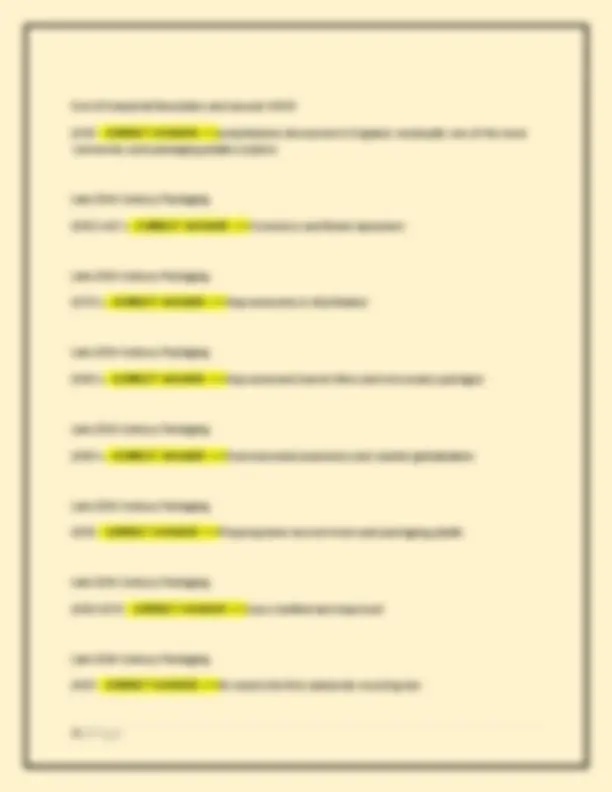
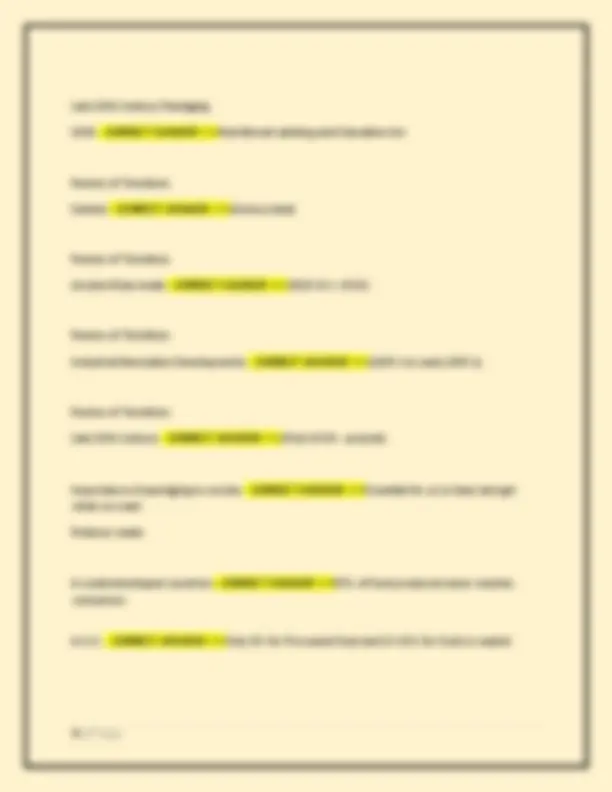

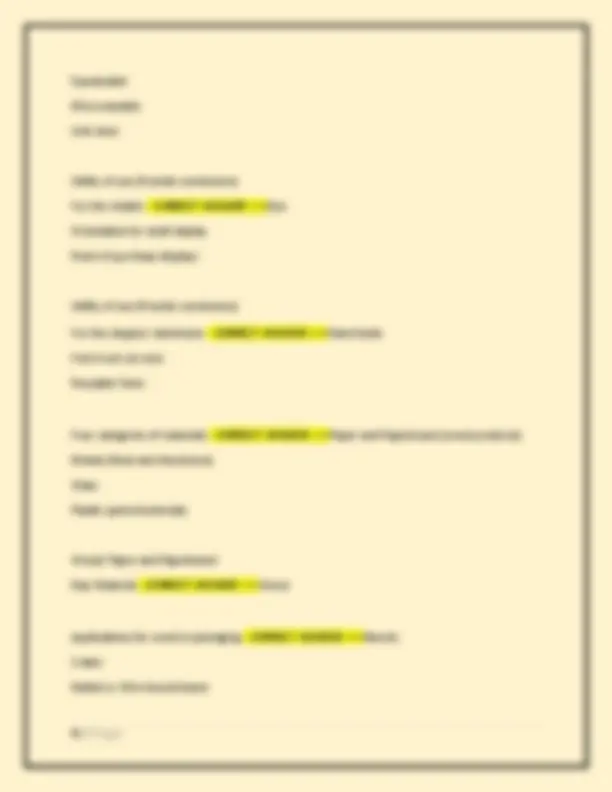
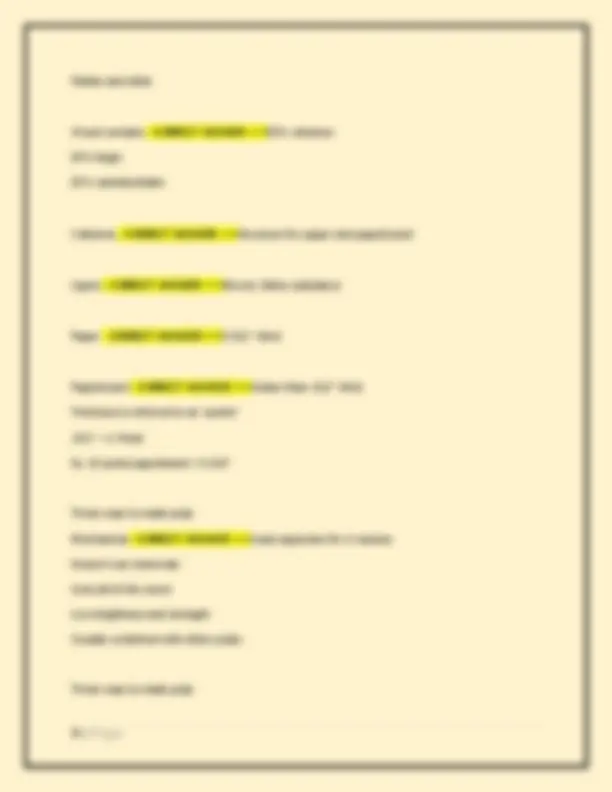

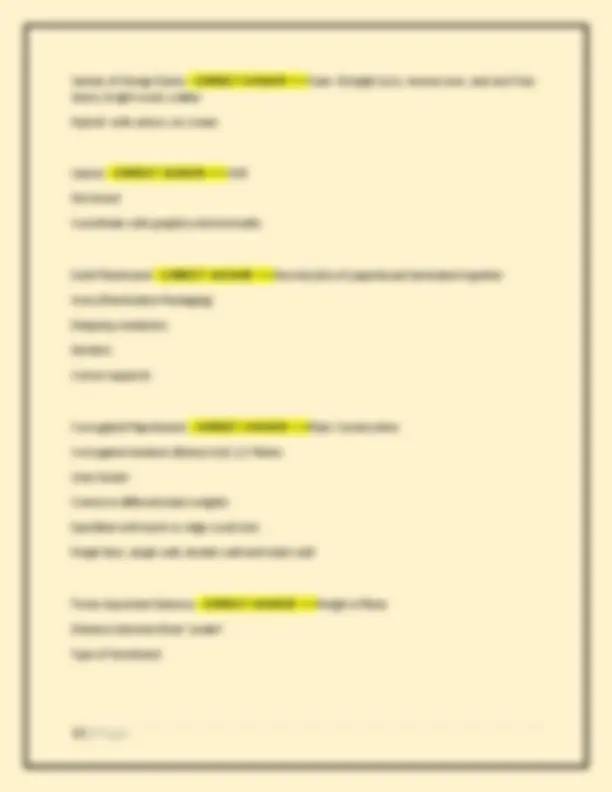
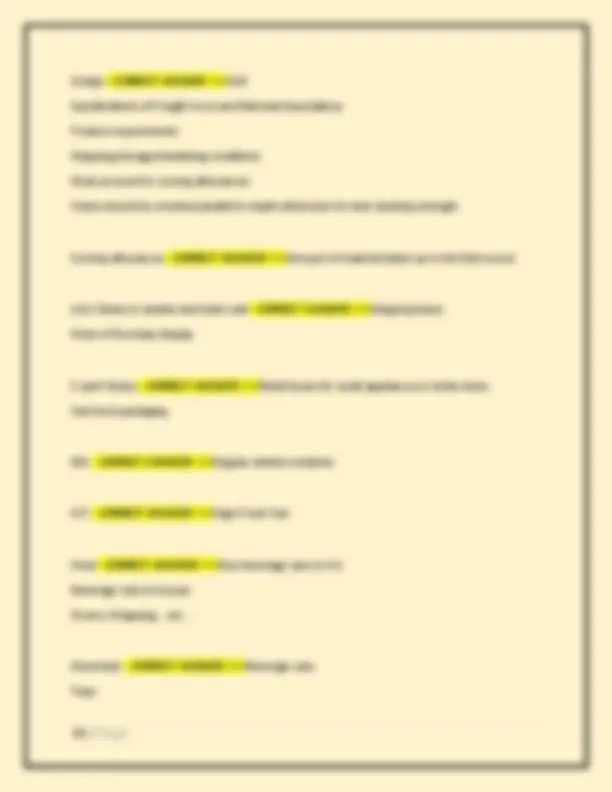
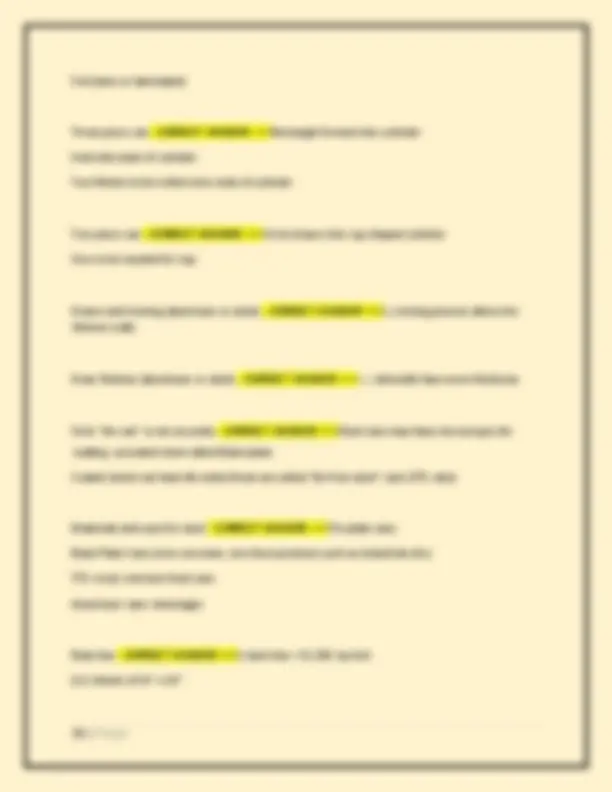
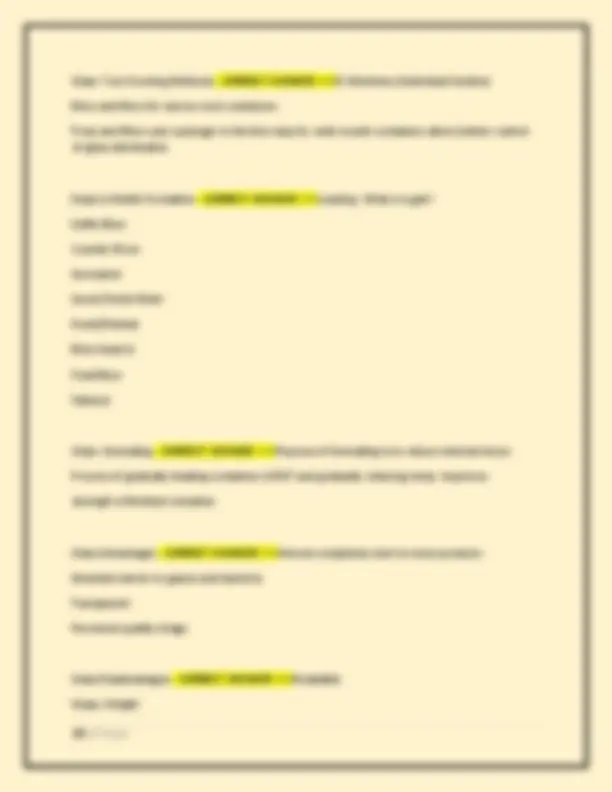
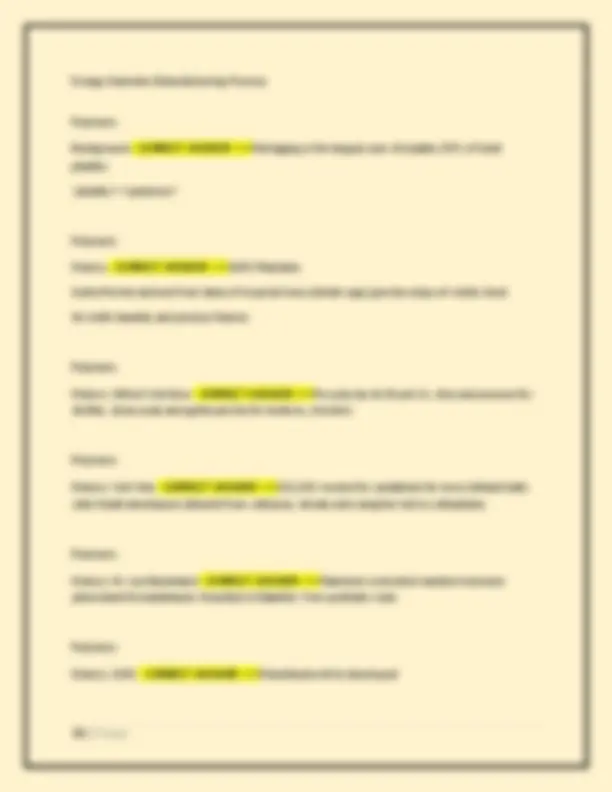
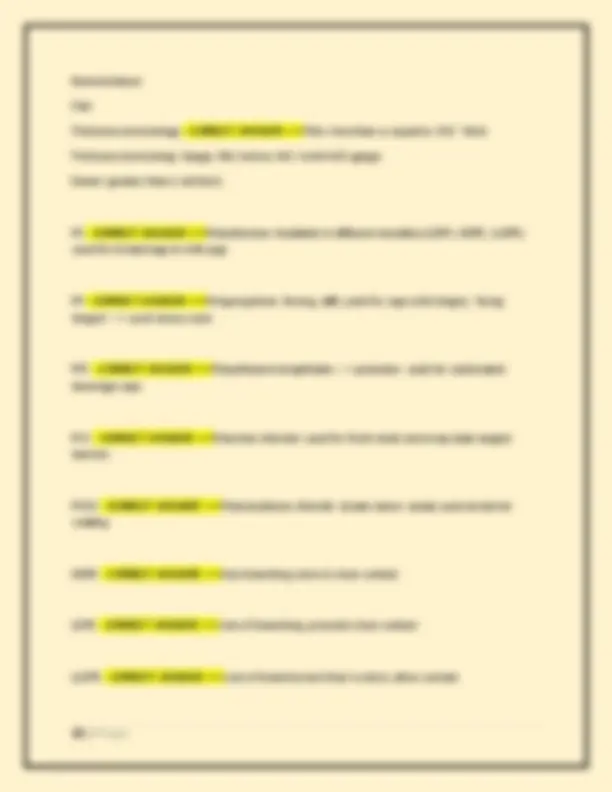
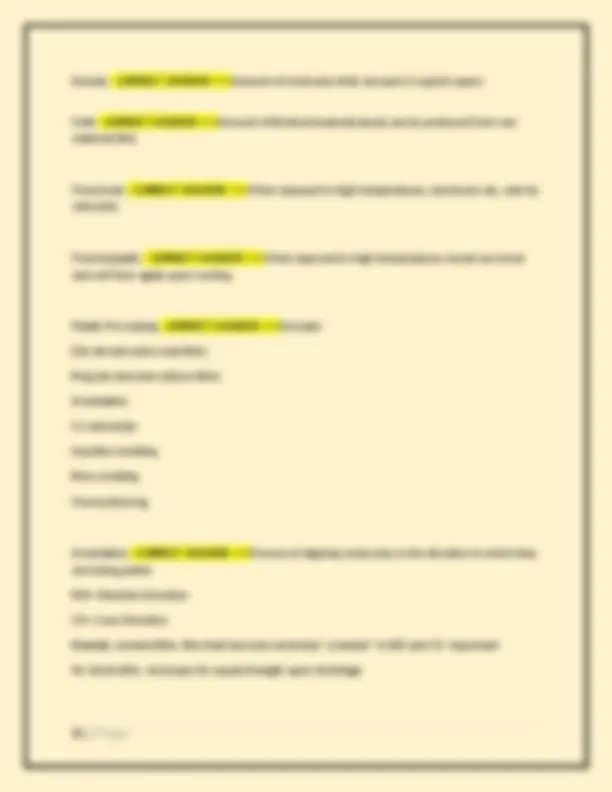
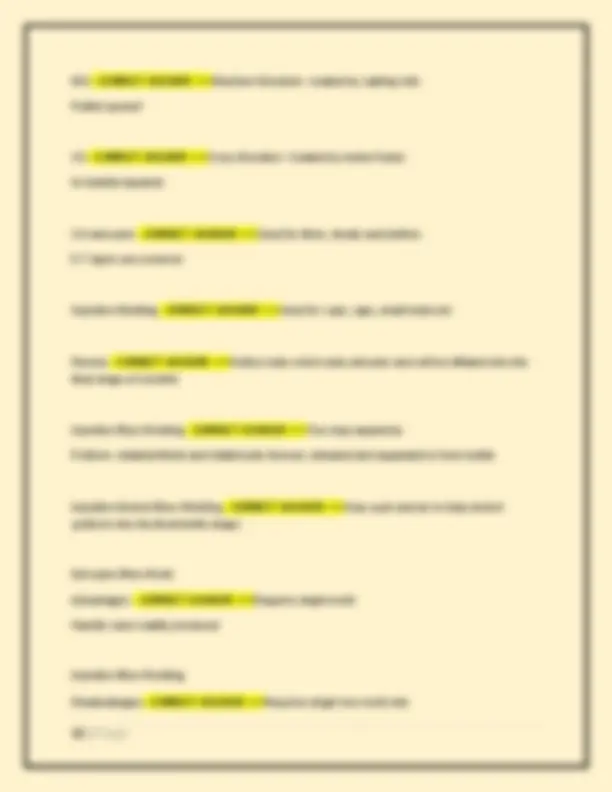
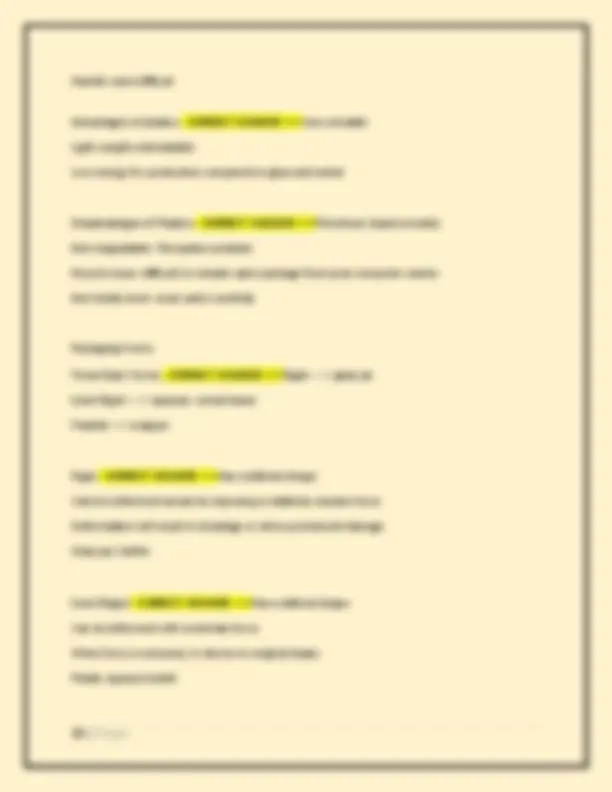
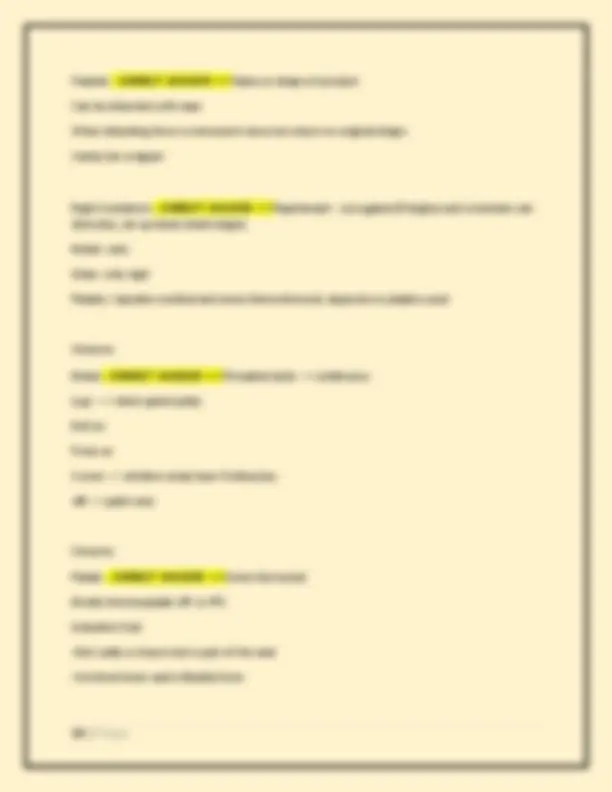
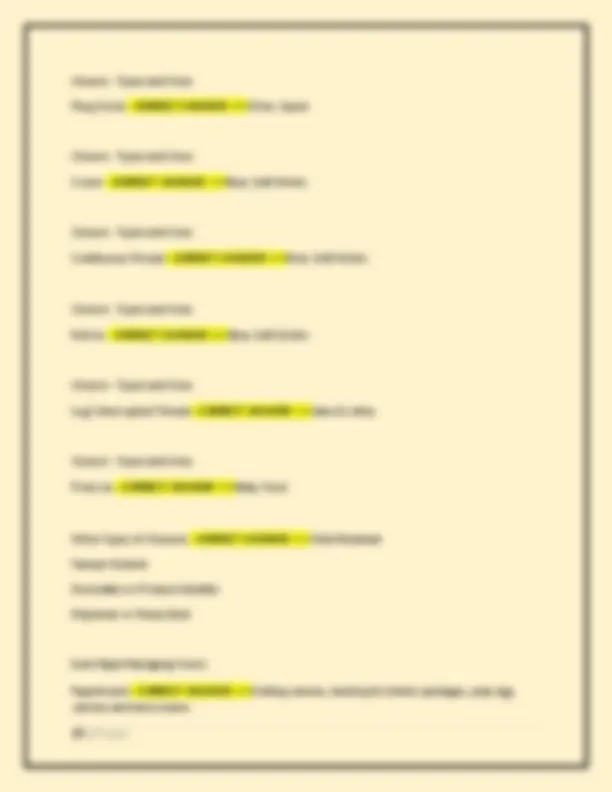
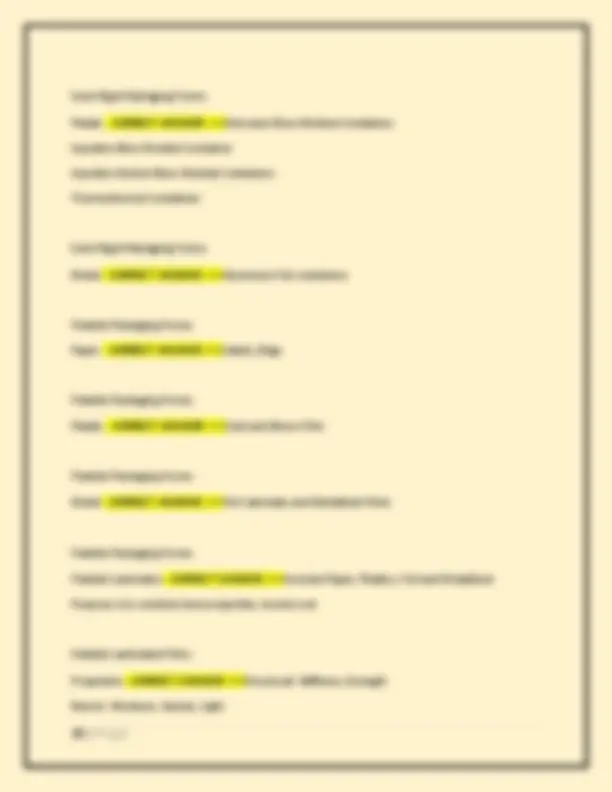
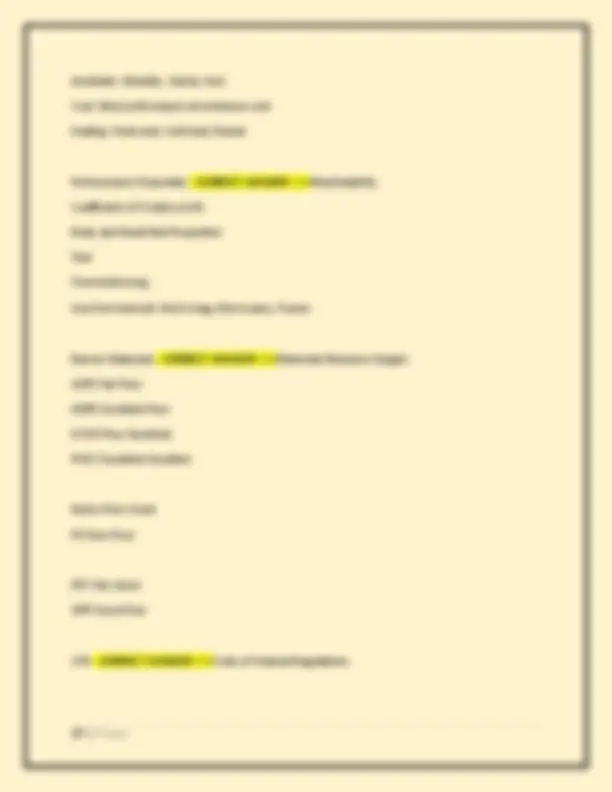
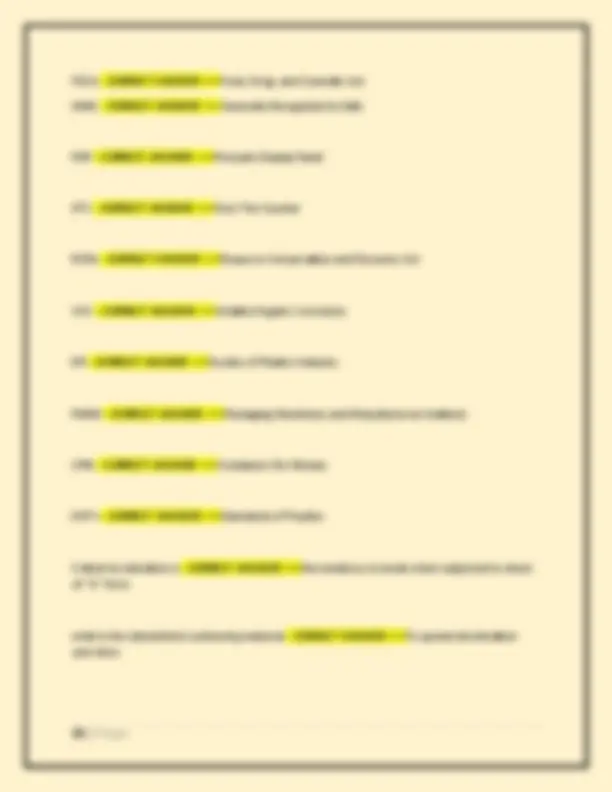
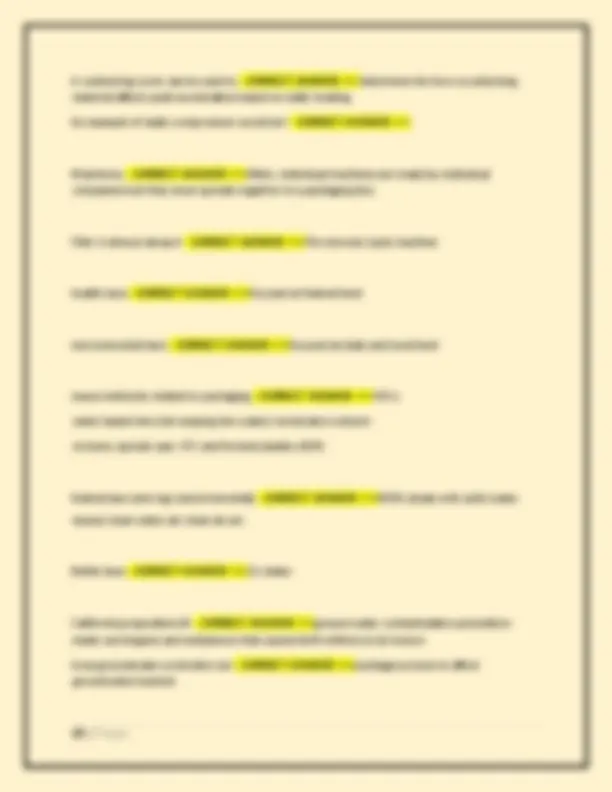
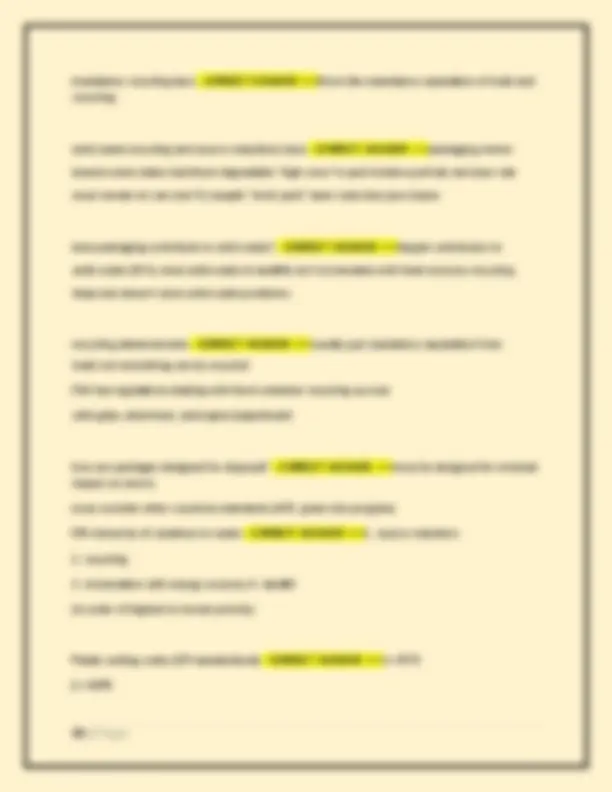
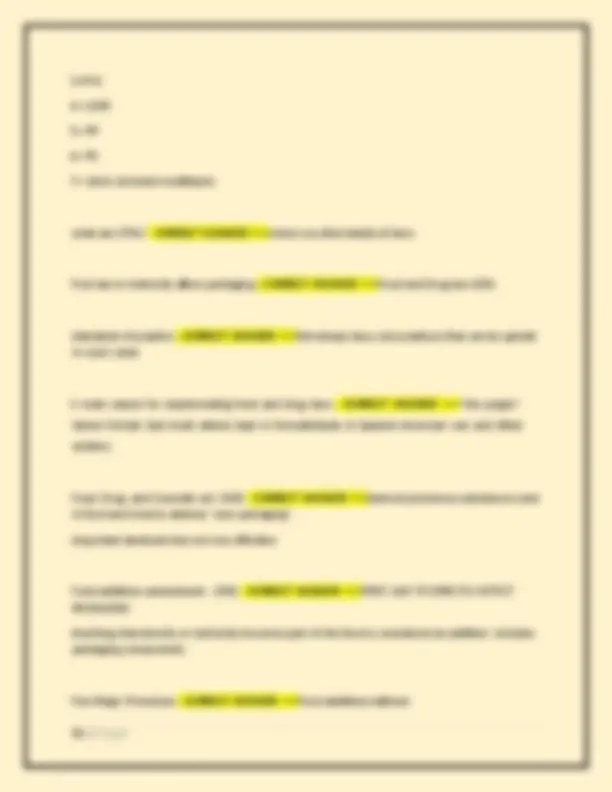
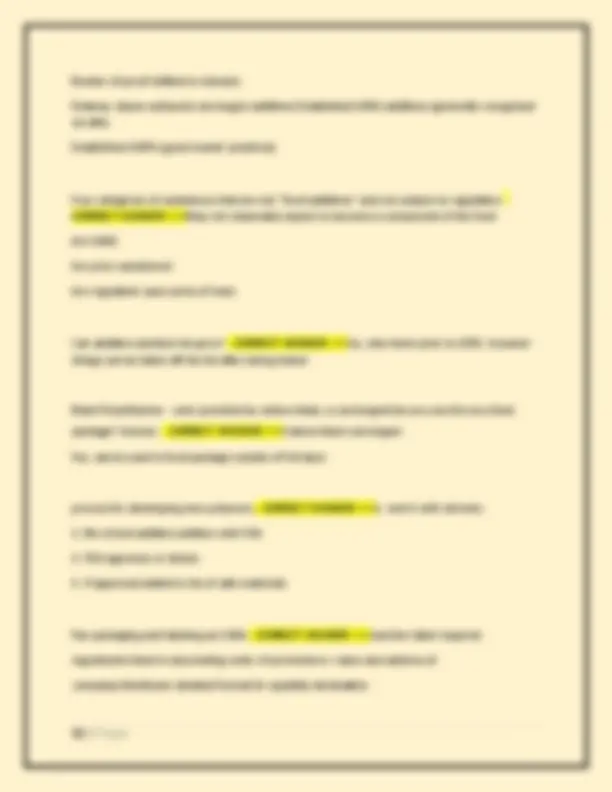
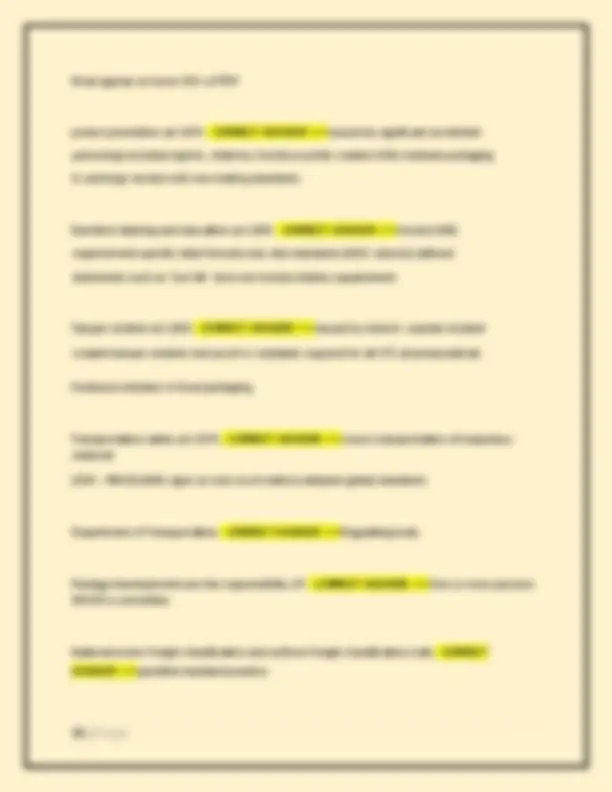
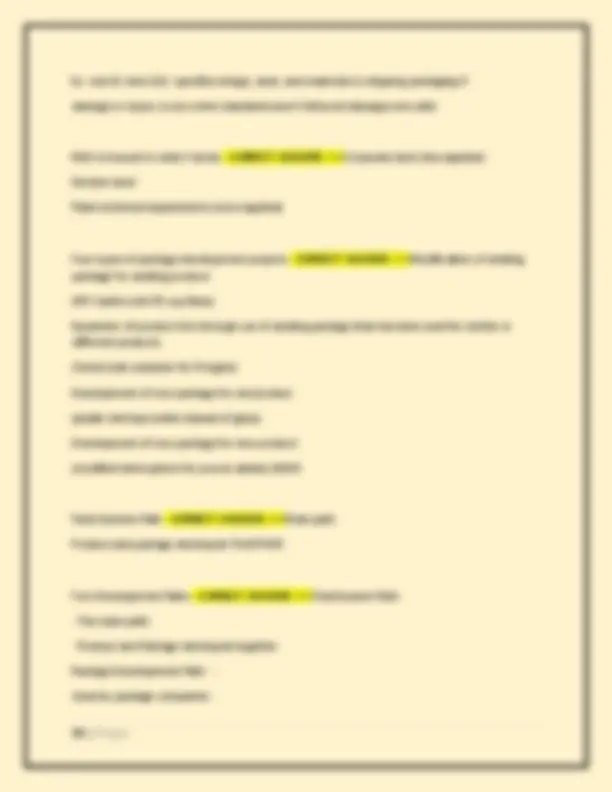
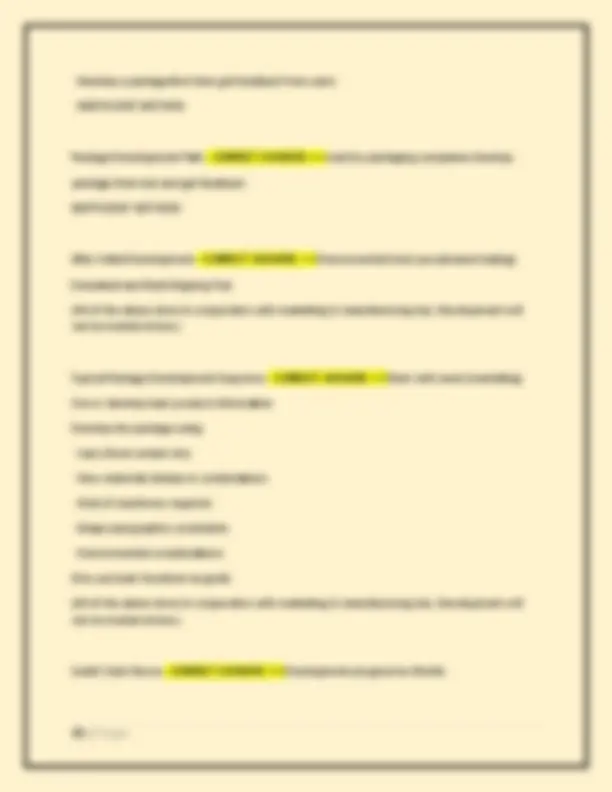
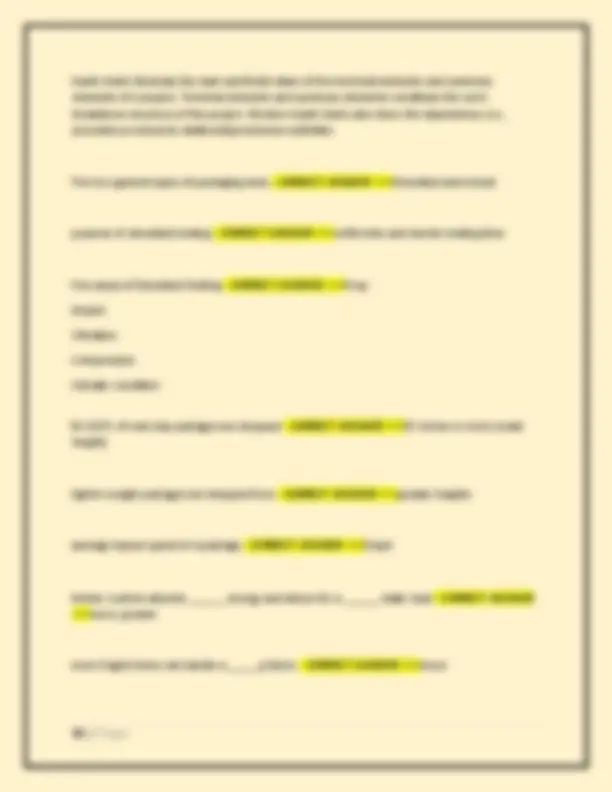
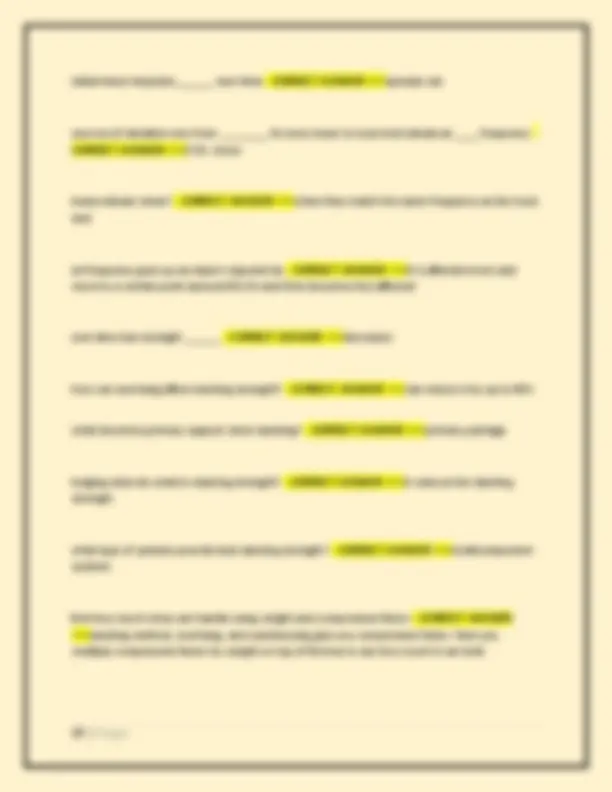
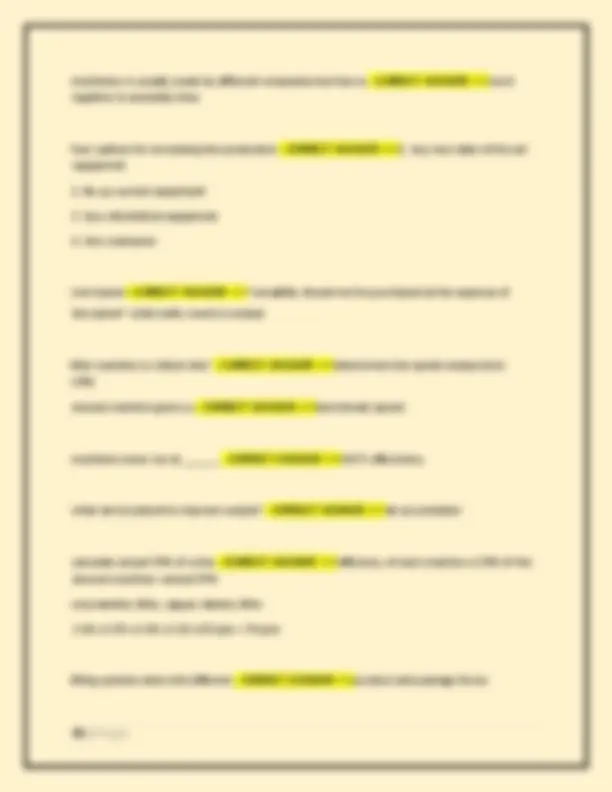
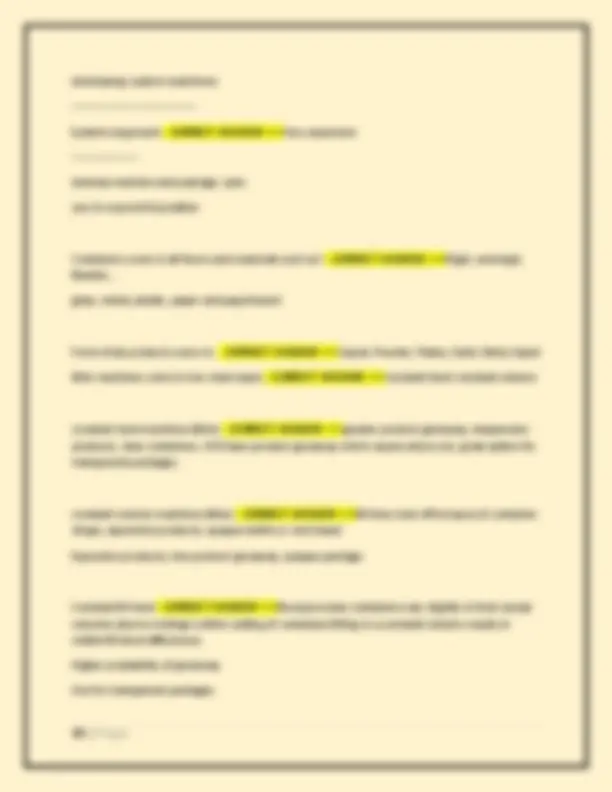
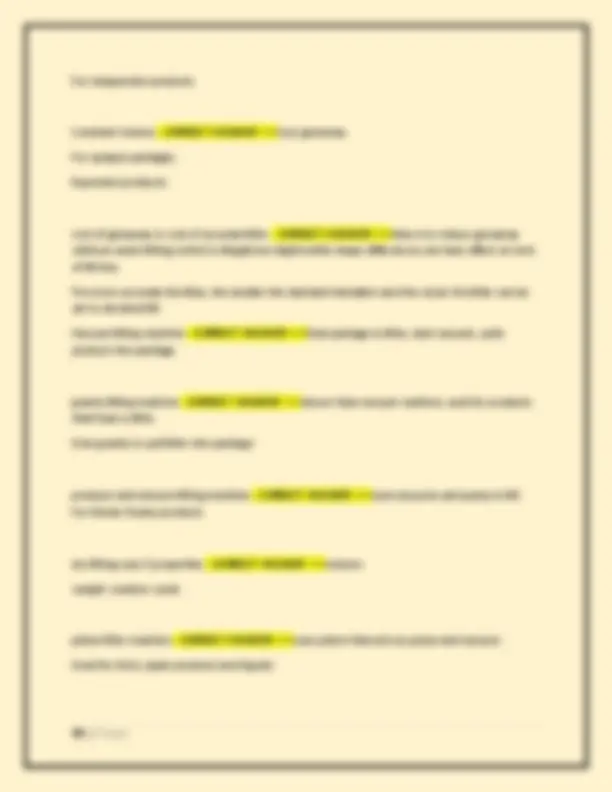
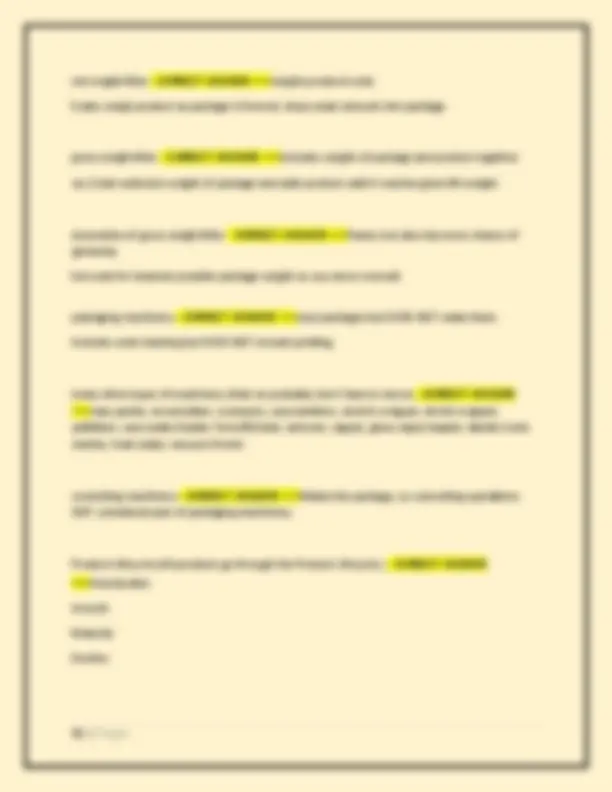
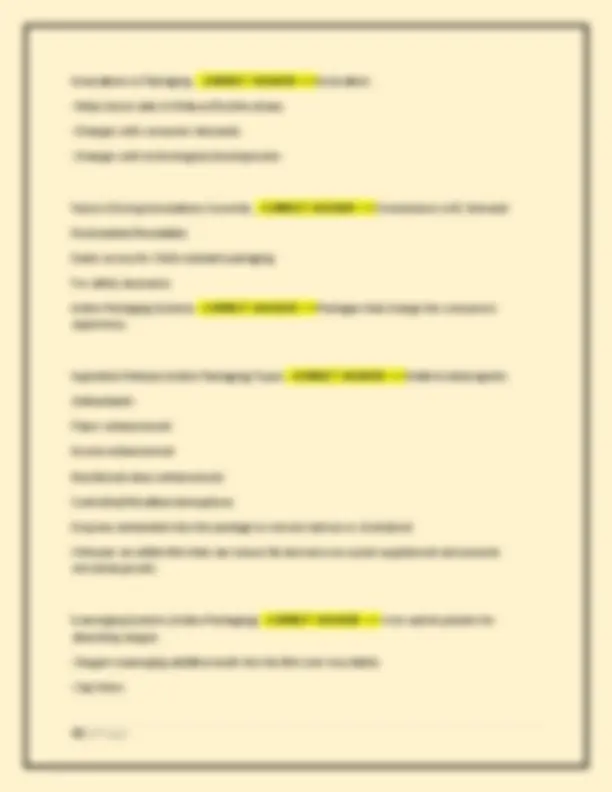
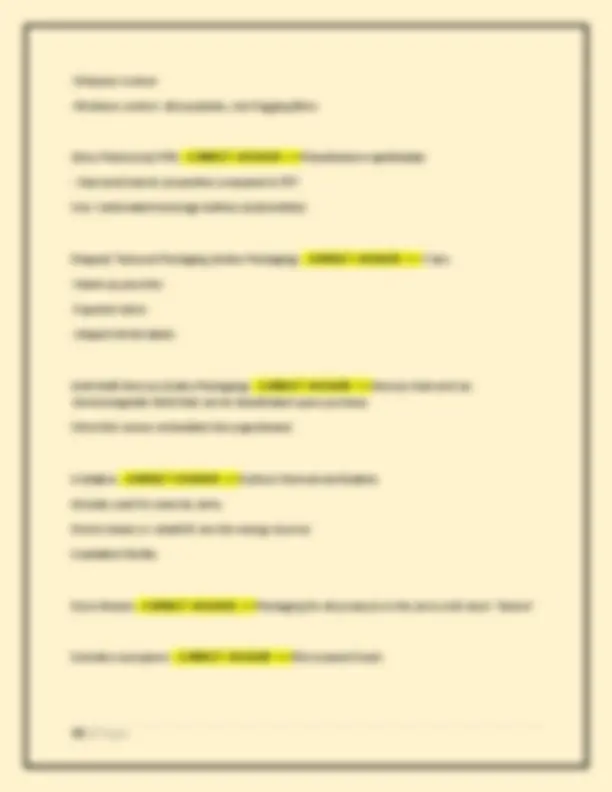
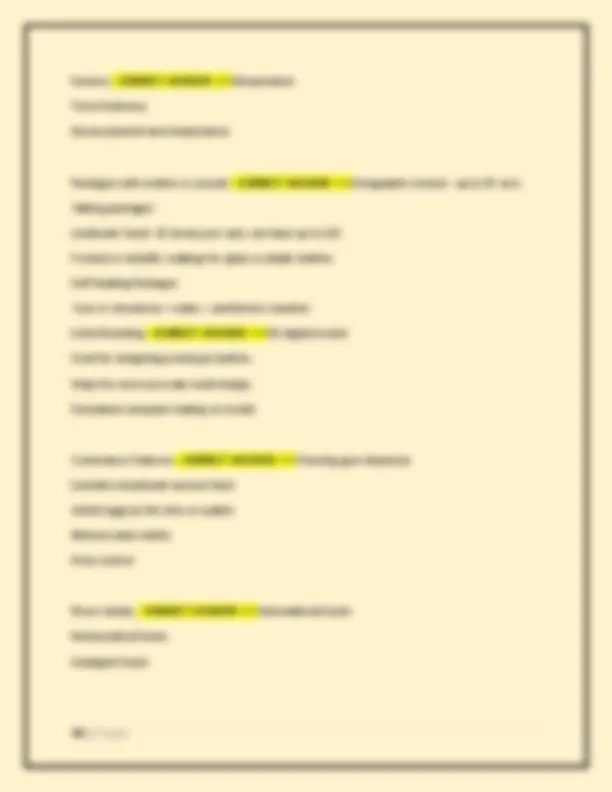
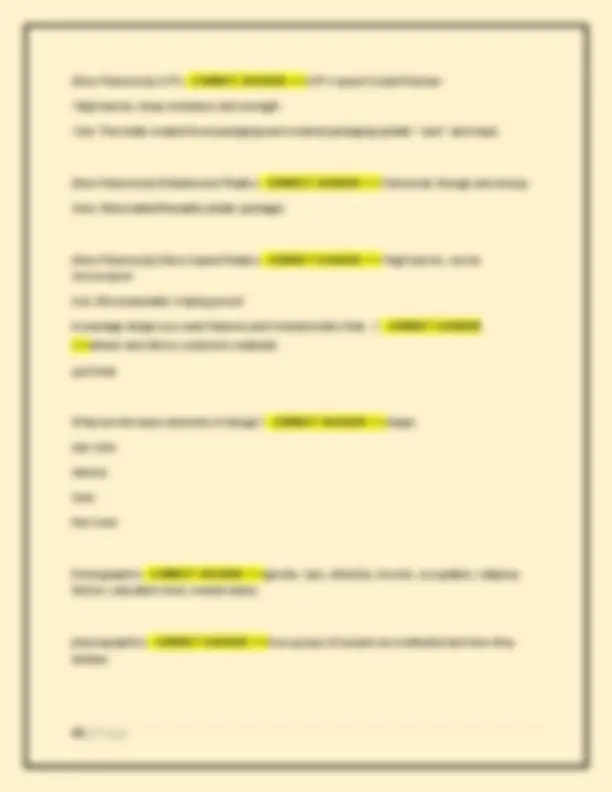
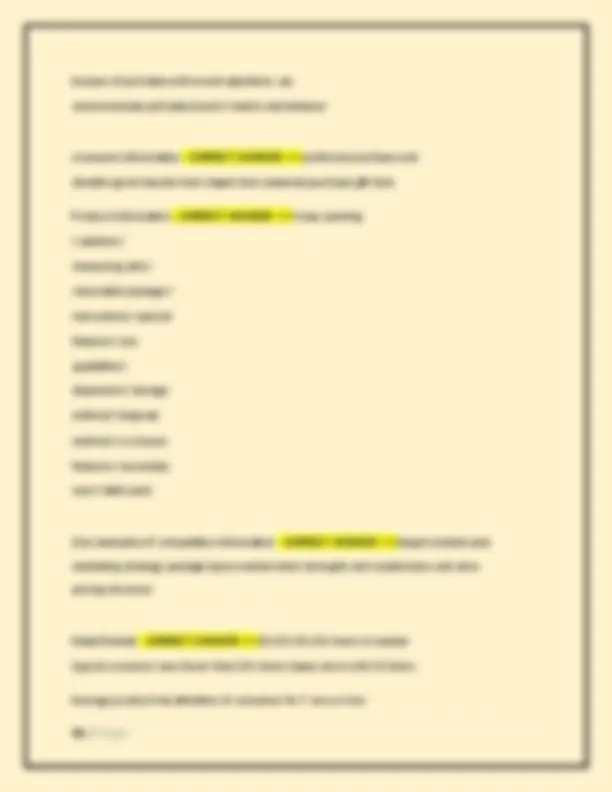
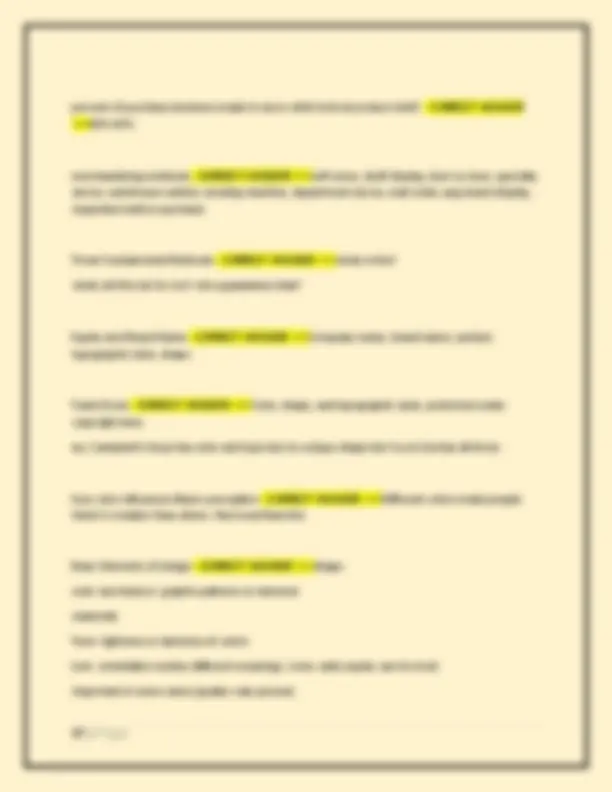
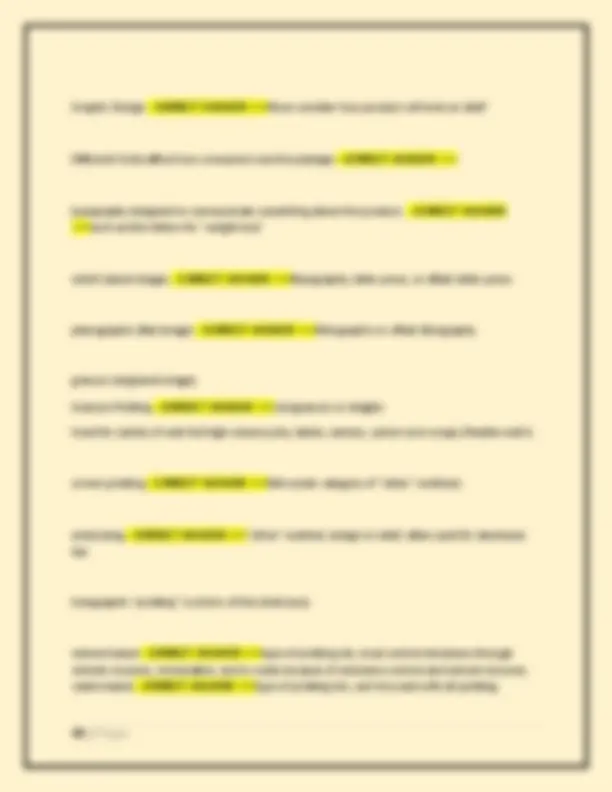
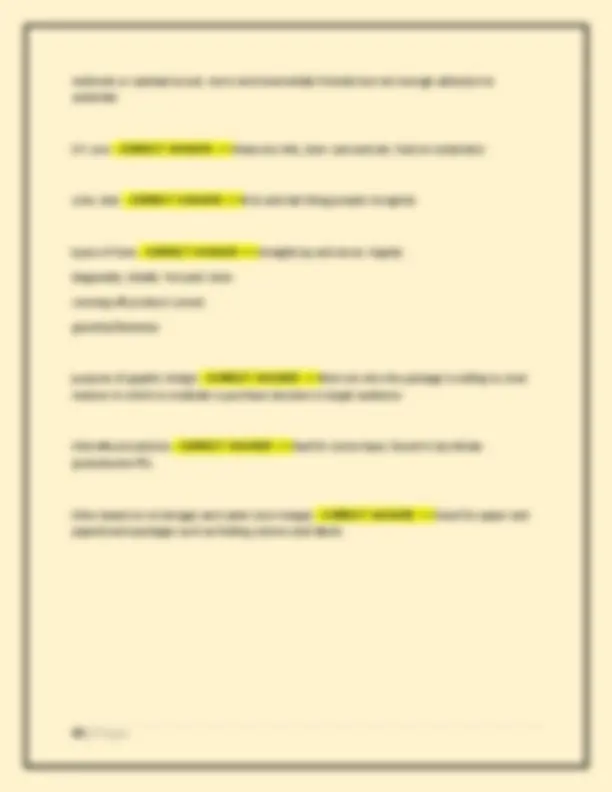


Study with the several resources on Docsity

Earn points by helping other students or get them with a premium plan


Prepare for your exams
Study with the several resources on Docsity

Earn points to download
Earn points by helping other students or get them with a premium plan
Community
Ask the community for help and clear up your study doubts
Discover the best universities in your country according to Docsity users
Free resources
Download our free guides on studying techniques, anxiety management strategies, and thesis advice from Docsity tutors
PKSC 1020 FINAL EXAM COMPLETE 300+ QUESTIONS & CORRECT ANSWERS (WELL VERIFIED) GRADED A+
Typology: Exams
1 / 49

This page cannot be seen from the preview
Don't miss anything!










































Definition of Packaging in a dictionary - CORRECT ANSWER >>> "A protective unit for storing or shipping a commodity" (too limiting.) Definition of Packaging in a textbook - CORRECT ANSWER >>> "Coordinated system of preparing goods for transport , distribution, storage, retailing and use of goods." (still doesn't cover it well) How the Clemson Packaging Program defines it - CORRECT ANSWER >>> "It is a field that involves the use of materials, methods and machinery (3M,s) to develop and produce the packages that protect and preserve a product, help market the product and instruct the consumer in its proper use." Earliest packaging - CORRECT ANSWER >>> Consider what life was like in ancient days Packaging provided simple function of containment Earliest packages were from natural sources (grass, seashells, wood) Notable developments in Ancient Man-made Packages 3000 B.C - CORRECT ANSWER >>> Egyptians learn to blow and cast glass Notable developments in Ancient Man-made Packages 105 A.D - CORRECT ANSWER >>> Paper was invented in China Notable developments in Ancient Man-made Packages c. 1500 - CORRECT ANSWER >>> Cork stopper used for wine bottles (First protective packaging) without you get "spontaneous generation"--- pasture bends flask
Notable Developments During the Industrial Revolution 1809 - CORRECT ANSWER >>> Nicholas Appert- Canning process Notable Developments During the Industrial Revolution 1810 - CORRECT ANSWER >>> Peter Durand- Develops "canister" Notable Developments During the Industrial Revolution 1868 - CORRECT ANSWER >>> John Hyatt - patent for celluloid, leading to development of cellulose, first "plastic" Notable Developments During the Industrial Revolution c. 1895 - CORRECT ANSWER >>> Toothpaste first offered in tubes Notable Developments During the Industrial Revolution 1877 - CORRECT ANSWER >>> Quaker oats first used the "Quaker man" to represent their product Notable Developments During the Industrial Revolution 1897 - CORRECT ANSWER >>> First major use of paperboard for National Biscuit Company "Unedda" Biscuit product Notable Developments During the Industrial Revolution Late 1800's- early 1900's - CORRECT ANSWER >>> First major use of graphics to sell product End of Industrial Revolution and around WWII - CORRECT ANSWER >>> Movement from bulk packaging to retail packaging Illustrates how social changes interact with packaging developments
Late 20th Century Packaging 1990 - CORRECT ANSWER >>> Nutritional Labeling and Education Act Review of Timelines Earliest - CORRECT ANSWER >>> (Unrecorded) Review of Timelines Ancient Man-made - CORRECT ANSWER >>> (3000 B.C- 1500) Review of Timelines Industrial Revolution Developments - CORRECT ANSWER >>> (1800's to early 1900's) Review of Timelines Late 20th Century - CORRECT ANSWER >>> (Post WWII - present) Importance of packaging to society - CORRECT ANSWER >>> Essential for us to have and get what we want Reduces waste In underdeveloped countries - CORRECT ANSWER >>> 50% of food produced never reaches consumers In U.S. - CORRECT ANSWER >>> Only 3% for Processed food and 10-15% for fresh is wasted
Future Trends - CORRECT ANSWER >>> Away from glass and metal toward plastics and composites Away from toward flexible and semi-rigid Metallized instead of foil laminates Tamper evident and anti-theft devices More informative ex.) OTC drug pkgs Convenience ex.) easy open/reseal Reduced packaging Incorporation of more recycled materials More technically complex packaging:breathable, temp. sensors, oxygen absorbers, holographic images Packaging Users/Producers - CORRECT ANSWER >>> Most companies are either users or suppliers Some larger companies can be users and suppliers A raw material producer may also be a converter Packaging Functions Overview - CORRECT ANSWER >>> Contain Protect/ Preserve Inform/ Sell Provide convenience or utility of use Levels of Packaging Primary - CORRECT ANSWER >>> Package directly in contact with the product Ex. Cereal bag inside a box
Protect consumer from the contents (corrosive or dangerous products which involve child resistant packages) Protect against tampering (tamper evident or resistant but never tamper proof) Freshness indicators for food Inform/Sell Information Required by Law - CORRECT ANSWER >>> Contents Nutrition Label Warnings Shipping Information Motivational Information (not required by law) - CORRECT ANSWER >>> Type of material Shape and size Color Typography Symbols or icons Illustrations or photographic images Games Recipes Know the term "trade dress" - CORRECT ANSWER >>> Includes shape, color and print Covered under trademark law Ex. Coca-Cola, Disney Characters, Sports teams, University logos. Utility of use (Provide connivence) For the consumer - CORRECT ANSWER >>> Easy open/ closing - Resealing
Squeezable Microwavable Unit dose Utility of use (Provide connivence) For the retailer - CORRECT ANSWER >>> Size Orientation for shelf display Point of purchase displays Utility of use (Provide connivence) For the shipper/ distributor - CORRECT ANSWER >>> Hand holds Fork truck cut outs Reusable Totes Four categories of materials - CORRECT ANSWER >>> Paper and Paperboard (wood products) Metals (Steel and Aluminum) Glass Plastic (petrochemicals) Wood/ Paper and Paperboard Raw Material - CORRECT ANSWER >>> Wood Applications for wood in packaging - CORRECT ANSWER >>> Barrels Crates Nailed or Wire-bound boxes
Chemical - CORRECT ANSWER >>> Kraft=Strength
Sulfate (kraft)-- most widely used Sulfate Soda Higher quality than mechanical pulp Three ways to make pulp Semi-Chemical - CORRECT ANSWER >>> Cook wood in chemicals Grind in disc refiner Not used much except for corrugated media Paper making Machinery is large - CORRECT ANSWER >>> Speed: 3000 ft./min Web width: 30ft Production: 800 miles/ day Two types of paper making machines - CORRECT ANSWER >>> Fourdrinier- for paper or paperboard Cylinder- for paperboard only General procedure for both processes - CORRECT ANSWER >>> Screen Squeeze Dry Calendaring - CORRECT ANSWER >>> Paper runs through stacks of rollers Increases density and smoothness Important for strength and print quality
Variety of Design Styles - CORRECT ANSWER >>> Tube- Straight tuck, reverse tuck, seal end Tray- beers, bright wood, walker Hybrid- milk carton, ice cream Layout - CORRECT ANSWER >>> CAD Die board Coordinate with graphics electronically Solid Fiberboard - CORRECT ANSWER >>> Several plies of paperboard laminated together Uses (Distribution Packaging) Shipping containers Dividers Corner supports Corrugated Paperboard - CORRECT ANSWER >>> Basic Construction Corrugated medium (flutes) A,B,C,E,F flutes Liner-board Comes in different basis weights Specified with burst or edge crush test Single face, single wall, double wall and triple wall Three important features - CORRECT ANSWER >>> Height of flute Distance between flute "peaks" Type of linerboard
Design - CORRECT ANSWER >>> CAD Specifications of Freight truck and Railroad Associations. Product requirements Shipping/storage/handeling conditions Must account for scoring allowances Flutes should be oriented parallel to depth dimension for best stacking strength Scoring allowances - CORRECT ANSWER >>> Amount of material taken up in the fold (score) A,B,C flutes in double and triple wall - CORRECT ANSWER >>> Shipping boxes Point of Purchase display E and F flutes - CORRECT ANSWER >>> Retail boxes for small appliances or bulky items Fast food packaging RSC - CORRECT ANSWER >>> Regular slotted container ECT - CORRECT ANSWER >>> Edge Crush Test Steel - CORRECT ANSWER >>> Non-beverage cans in U.S. Beverage cans in Europe Drums, Strapping... etc.... Aluminum - CORRECT ANSWER >>> Beverage cans Trays
Plating weights specified as lbs. / basebox ex. tin plated steel designated as 20 plate, has 0.10/0.10 lbs./base box tin Aluminum - CORRECT ANSWER >>> Most abundant metallic element in earth crust 8.05% of first ten miles of crust 46.68% oxygen 27.6% silicon Remainder exist as AI2O3 (alumina) Once considered a precious metal Aluminum Raw Material Process - CORRECT ANSWER >>> Mine as Bauxite (about 50% AI2O3) Produce Alumina by the bayer process Produce Aluminum from Alumina by Hall Herouit Process (1886) Aluminum Raw material process Sheet Ingot - CORRECT ANSWER >>> Soak @ 1000F Breakdown Hot or Cold Rolling Aluminum- Thickness/Uses - CORRECT ANSWER >>> Aluminum foil- 0.006" (6mil) Peel-able Lid Stock- 0.002-0.003" (2-3mil) Heavy Duty Reynolds Wrap- 0.001" (1mil) Regular Reynolds Wrap - 0.0006" (2/3mil) Converter Foil- 0.00024 to 0.00035" (1/4-1/3 mil) Glass Raw Materials Percentage - CORRECT ANSWER >>> 70 - 75% Sand
12 - 15% Soda Ash 8 - 10% Limestone 5% other Glass- Raw Materials, Purpose of each - CORRECT ANSWER >>> Sand- Main structural component Soda Ash- Reduces melting temp. Limestone- Improves Hardness Cullet- 20% of total composition broken, recycled glass also reduces melting temp. Minor ingredients of glass - CORRECT ANSWER >>> Alumina- increased hardness Magnesium oxide- Chemical durability Coloring agents- Amber, Green Bottle Manufacturing Steps - CORRECT ANSWER >>> Unloading Storage Weighing Mixing Furnace IS Machine (Individual Section Machine) Annealing Lehr Inspection Packing and Shipping How hot does the furnace get? - CORRECT ANSWER >>> 2700 - 3000F
Energy Intensive Manufacturing Process Polymers Background - CORRECT ANSWER >>> Packaging is the largest user of plastics 30% of total plastics "plastics"="polymers" Polymers History - CORRECT ANSWER >>> 1843 Maylasia Gutta Percha derived from latex of tropical trees (Getah-sap) (percha-strips of cloth) Used for knife handles and picture frames Polymers History: Alfred Critchlow - CORRECT ANSWER >>> Pro-phy-lac-tic Brush Co. dies and presses for shellac, straw pulp and gutta percha for buttons, checkers Polymers History: Civil War - CORRECT ANSWER >>> $10,000 reward for substitute for ivory billiard balls. John Hyatt developed celluloid from cellulose, nitrate and camphor led to cellophane. Polymers History: Dr. Lea Backeland - CORRECT ANSWER >>> Patented controlled reaction between phenoland formaldehyde. Resulted in Bakellte- First synthetic resin Polymers History: 1930 - CORRECT ANSWER >>> Polyethylene first developed
Nomenclature Film Thickness terminology - CORRECT ANSWER >>> Film= less than or equal to .001" thick Thickness terminolog: Gauge, Mil, Inches .001'=1mil=100 gauge. Sheet= greater than 1 mil thick PE - CORRECT ANSWER >>> Polyethylene- Available in different densities (LDPE, HDPE, LLDPE) used for bread bags to milk jugs. PP - CORRECT ANSWER >>> Polypropylene- Strong, stiff, used for caps with hinges, "living hinges"---> wont stress crack PET - CORRECT ANSWER >>> Polyethylene terapthiate----> polyester- used for carbonated beverage caps PVC - CORRECT ANSWER >>> Polyvinyl chloride- used for fresh meat overwrap (bad oxygen barrier) PVDC - CORRECT ANSWER >>> Polyvinylidene chloride- (trade-name- saran) used as barrier coating HDPE - CORRECT ANSWER >>> less branching come in close contact LDPE - CORRECT ANSWER >>> Lots of branching, prevents close contact LLDPE - CORRECT ANSWER >>> Lost of branches but they're short, allow contact